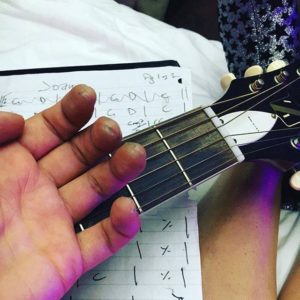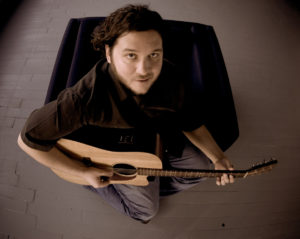 I’ll be dissecting Joanne song by song every day until November, when I debut a month of major daily content!
I’ll be dissecting Joanne song by song every day until November, when I debut a month of major daily content!
The title track of Joanne introduces yet another new facet of Lady Gaga – a finger-picked, acoustic folk-rock ballad.
I am one of those music fans who tends to fetishize acoustic instruments as being “real” music. That doesn’t stop me from loving buzzy, synthy music from the likes of Garbage and Gaga, but I’m always a little more excited when I see an artist I love at an acoustic piano or wielding and acoustic guitar. I was excited over the idea of Madonna holding a guitar a a prop when the first images of Music debuted at the very start of this blog, and later lost my mind when she actually played one in concert.
Yet, I don’t have that same thrill with Lady Gaga. Almost the opposite, actually.
I’ve seen her tear things up on piano and dance while playing keytar. I know she writes her own songs. I’m sure she can play guitar, but it’s not going to be her most expert skill, so why waste time there?
“Joanne” answers that question.
Lady Gaga can certainly play these exact arpeggios on piano, but certain songs need the acoustic guitar – belong with it. This song is akin to Paul McCartney’s solo Beatles cut “Blackbird,” with its carefully merged set of picking, tapping, and bass sounding like a single instrument. “Joanne” adds a sheen of shimmery organ behind its choruses to fill out the sound, but that’s no different than McCartney’s simple dressing of bird song.
The verse starts simply enough, picking through a standard I-V-IV progression in G. “Take my hand, stay Joanne, heaven’s not ready for you” is about as treacly simple as any folk song can get – way past “Hey There Delilah” on the treacle scale. On my first listen, I was already girding myself for an awful, earnest tune.
Then I reached the chorus.
The simple “Girl, where do you think you’re going? Where do you think you’re going, girl?” chorus is a hook for the ages. It recalls the sharp knife simplicity of the best Neil Young refrains. (Don’t forget, she name-checks his “Heart of Gold” on “You & I.”)

Gaga posted this photo on her Facebook, of newly callused fingers hovering above a lead sheet for “Joanne.”
So many tiny, deliberate choices in the chorus make it a classic. That Gaga starts the first one in a softer, more mixed voice before launching into a full-throated belt. The higher melodic jump on “think” in the second phrase. The surprising dip to the minor-seventh step to resolve on IV on its otherwise verbatim repeat.
The power, sentiment, and performance behind this one vague line makes it one of the most memorable in Lady Gaga’s entire catalog.
When you have a chorus that plain and powerful, you don’t need fancy dressing on the rest of the song. You can afford a plaintive, almost-silly set of lyrics that includes lines like, “I can’t wait to see you soar.” If the verses were too complex, too poetic, they would would disarm the simple power of that chorus.
I sometimes feel this tiny-voiced, swooping, raspy singing from Gaga on the verses is somehow “fake” because I’ve heard her do so much big-throated belting. Who I am to say what Gaga’s “real” voice is? Maybe this is the way she loves to sing? Her ability to occupy a spectrum from her weird melodic mumble on “Poker Face” to her lovely Sound of Music medley on the Oscars to the too-perfect pronunciation on “Perfect Illusion” to this folk Americana vocal sound proves the prowess of her musicianship.
Lady Gaga truly is as much Whitney House as she is Madonna. You can’t do the things they’ve done vocally and sonically, respectively, without being acutely aware of your choices. And, just as Gaga acknowledged and interpolated her Beatles influences on “Speechless,” here she does the same for influences like Neil Young and even Dolly Parton.
 I’m live-blogging the debate tonight in the same format I have in the past – assigning values as we go.
I’m live-blogging the debate tonight in the same format I have in the past – assigning values as we go. I’m actually here to talk about Mutlu.
I’m actually here to talk about Mutlu.